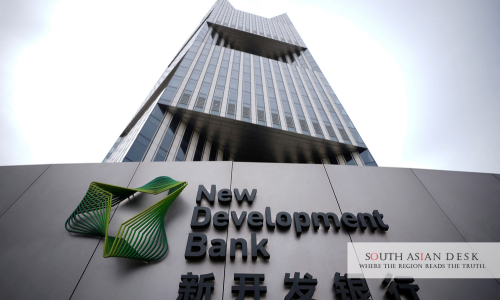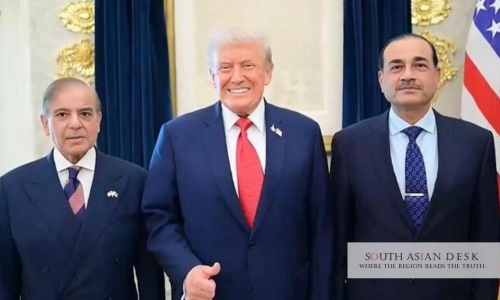The New Development Bank (NDB), established by BRICS nations, plans to issue its inaugural Indian rupee bond in the domestic market before the end of March 2026, aiming to raise between USD 400 million and USD 500 million through three- to five-year instruments, sources familiar with the discussions told Reuters on Friday, September 26, 2025. This move follows advanced talks with the Reserve Bank of India (RBI) and aligns with the bank’s strategy to finance 30 per cent of its commitments in member countries’ national currencies during its 2022-26 period.
Why It Matters for South Asia
In a region where economic integration remains a priority, the BRICS bank Indian rupee bond issuance could enhance funding access for infrastructure and sustainable projects in India, the subcontinent’s largest economy. By promoting local currency financing, it supports broader de-dollarisation trends, potentially reducing reliance on the US dollar and fostering currency stability across South Asia. This development underscores India’s push for rupee internationalisation, which may influence trade and investment dynamics in neighbouring countries like Pakistan and Bangladesh, where similar multilateral funding could follow.
BRICS Bank Advances Talks on Indian Rupee Bond
The NDB, headquartered in Shanghai and founded in 2015 by Brazil, Russia, India, China, and South Africa, has already raised approximately USD 11 billion through bond issuances, with about one-third in local currencies such as the Chinese yuan and South African rand. The planned BRICS bank Indian rupee bond represents a significant step, delayed from an initial target two years ago due to regulatory hurdles.
Sources indicated that the bank is in advanced discussions with the RBI, India’s central bank, to secure the necessary approvals for this debut issuance. The proceeds would fund Indian projects, providing local currency finance to mitigate exchange rate risks for borrowers.
Monale Ratsoma, the NDB’s chief financial officer, stated: “NDB is working with the government of India and regulators to explore raising funds in the local markets to provide local currency finance for Indian projects.” This comment, shared in recent interactions, highlights the strategic intent behind the bond by end of March timeline.
Bond by End of March Targets USD 400-500 Million
The first tranche of the BRICS bank Indian rupee bond is expected to mature in three to five years, with the issuance slated for the Indian domestic market before the fiscal year-end on. Analysts view this as a catalyst for rupee internationalisation, especially amid recent currency pressures.
Vivek Rajpal, Asia strategist at J.B. Drax Honore, noted: “The issue will draw interest from a segment of investors particularly those focused on emerging markets and interested in the de-dollarisation trend… It can also be seen as a step in the direction of rupee internationalisation.” He added that the rupee’s recent weakness—hitting record lows due to US trade and tariff policies—would not significantly deter investors.
This bond by end of March aligns with the NDB’s broader 2022-26 strategy, which emphasises sustainable development financing. The bank has approved over USD 32 billion for projects across member states since inception, focusing on infrastructure, clean energy, and social inclusion.
Background
The NDB’s interest in an Indian rupee bond programme dates back several years. In July 2023, according to the NDB’s official X account, vice-president and CFO Leslie Maasdorp discussed expansion plans, including an upcoming Indian rupee bond, in an interview with the Economic Times. This earlier signal underscores the project’s longevity, though specifics on the BRICS bank Indian rupee timeline emerged only recently.
India’s regulatory framework has evolved to support such issuances. The RBI has liberalised norms for foreign entities to access domestic debt markets, including masala bonds, rupee-denominated instruments issued overseas. However, this would mark the NDB’s first onshore bond by end of March in India, potentially setting a precedent for other multilateral lenders.
A 2024 NDB evaluation of its India portfolio mentioned ongoing consultations with the Government of India on rupee-denominated bonds akin to “Maharaja Bonds,” structured for international investors. Yet, no formal press release confirms the March 2026 target, leaving some details pending official endorsement.
What’s Next for the BRICS Bank Indian Rupee Initiative
As approvals progress, the NDB may announce further details on investor roadshows or green components, given its emphasis on climate finance—targeting 40 per cent of 2022-26 commitments for mitigation and adaptation efforts. Success here could pave the way for similar issuances in other BRICS currencies, strengthening South Asia’s financial sovereignty.
In conclusion, the forthcoming BRICS bank Indian rupee bond by end of March 2026 not only bolsters India’s development agenda but also signals a maturing multilateral framework for the region.
Published in SouthAsianDesk, September 27th, 2025
Follow SouthAsianDesk on X, Instagram, and Facebook for insights on business and current affairs from across South Asia.






